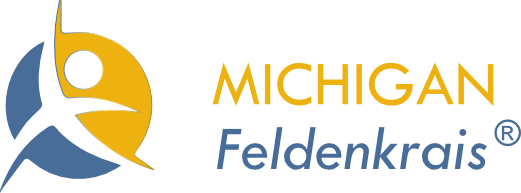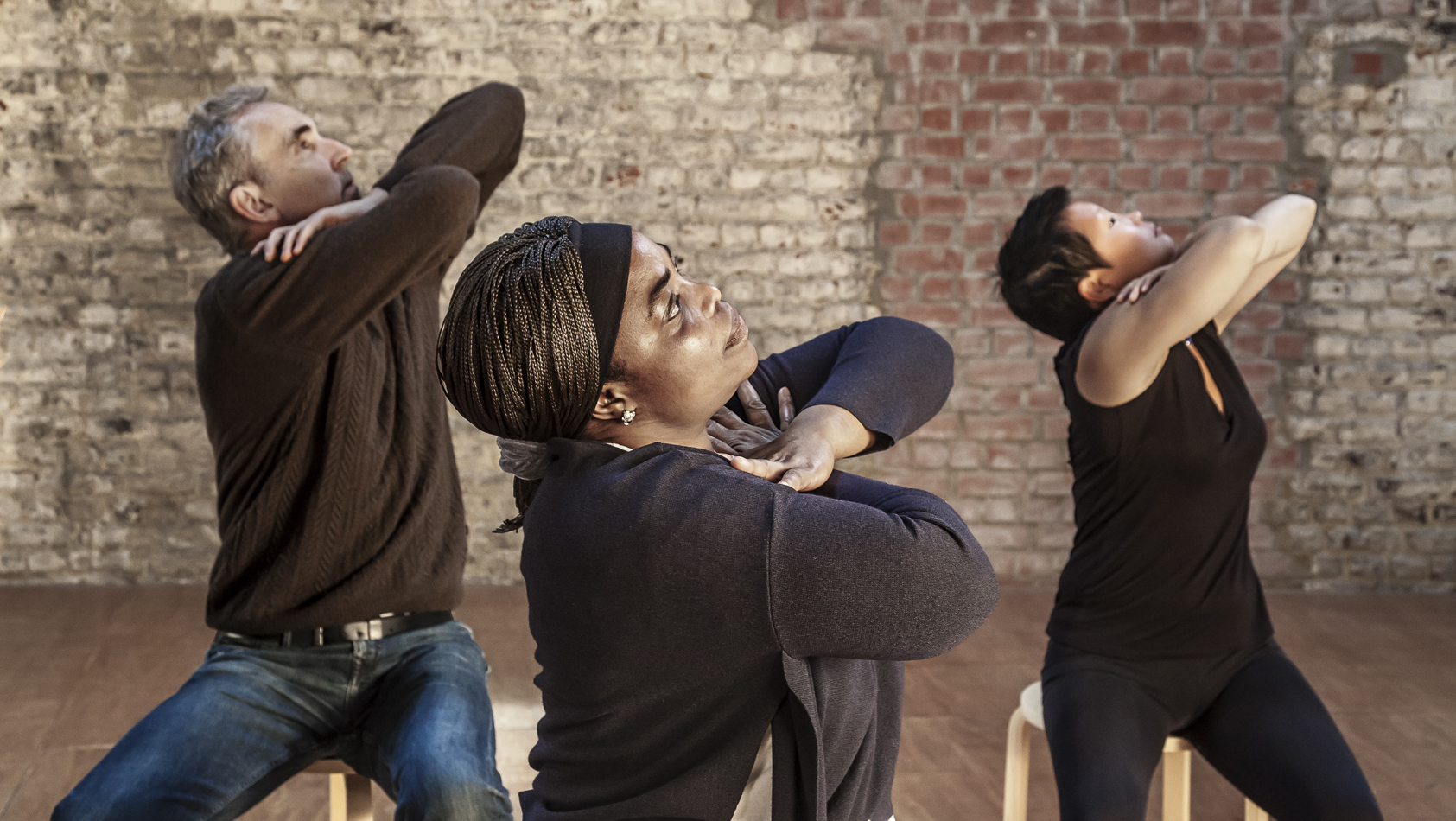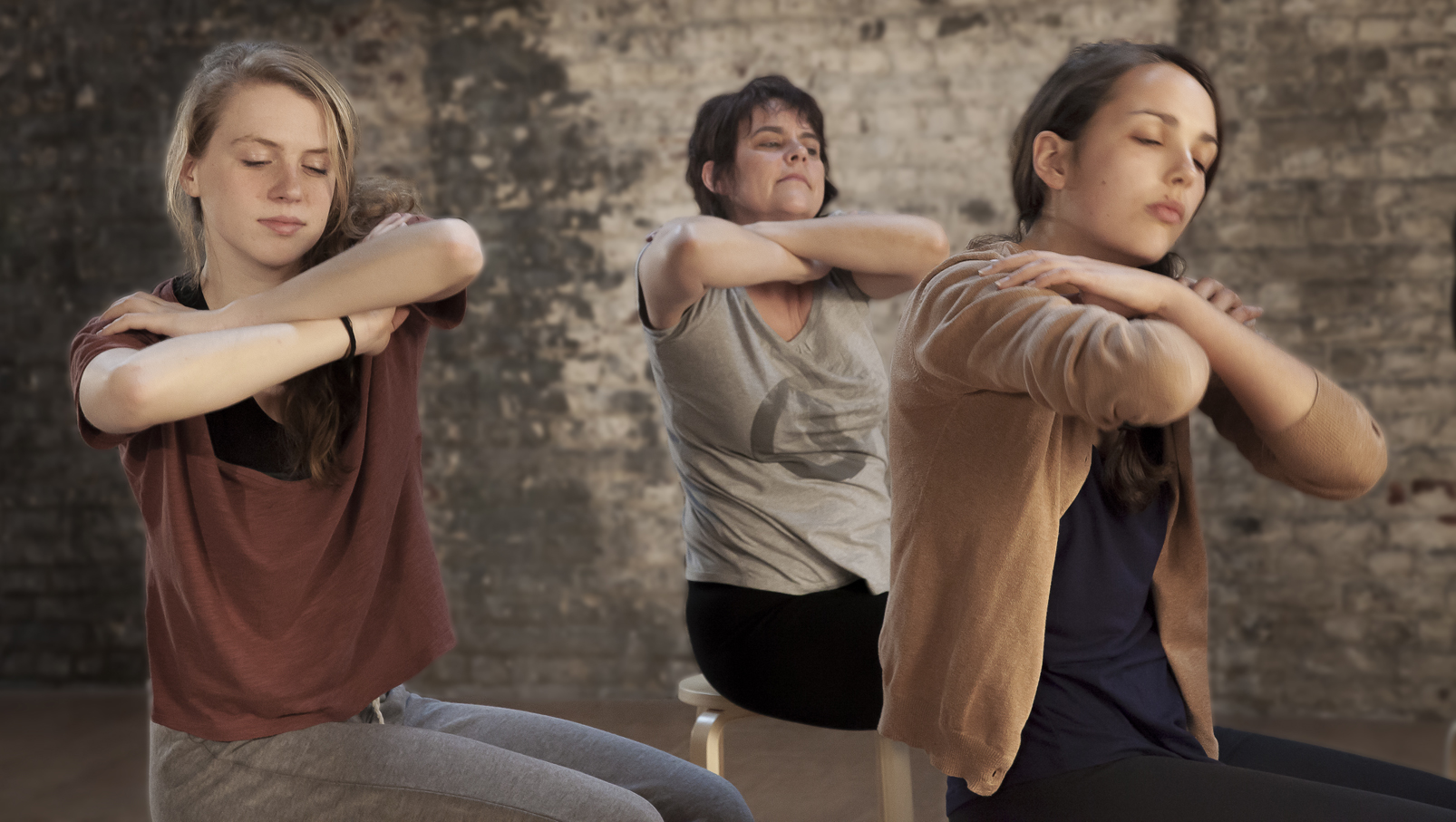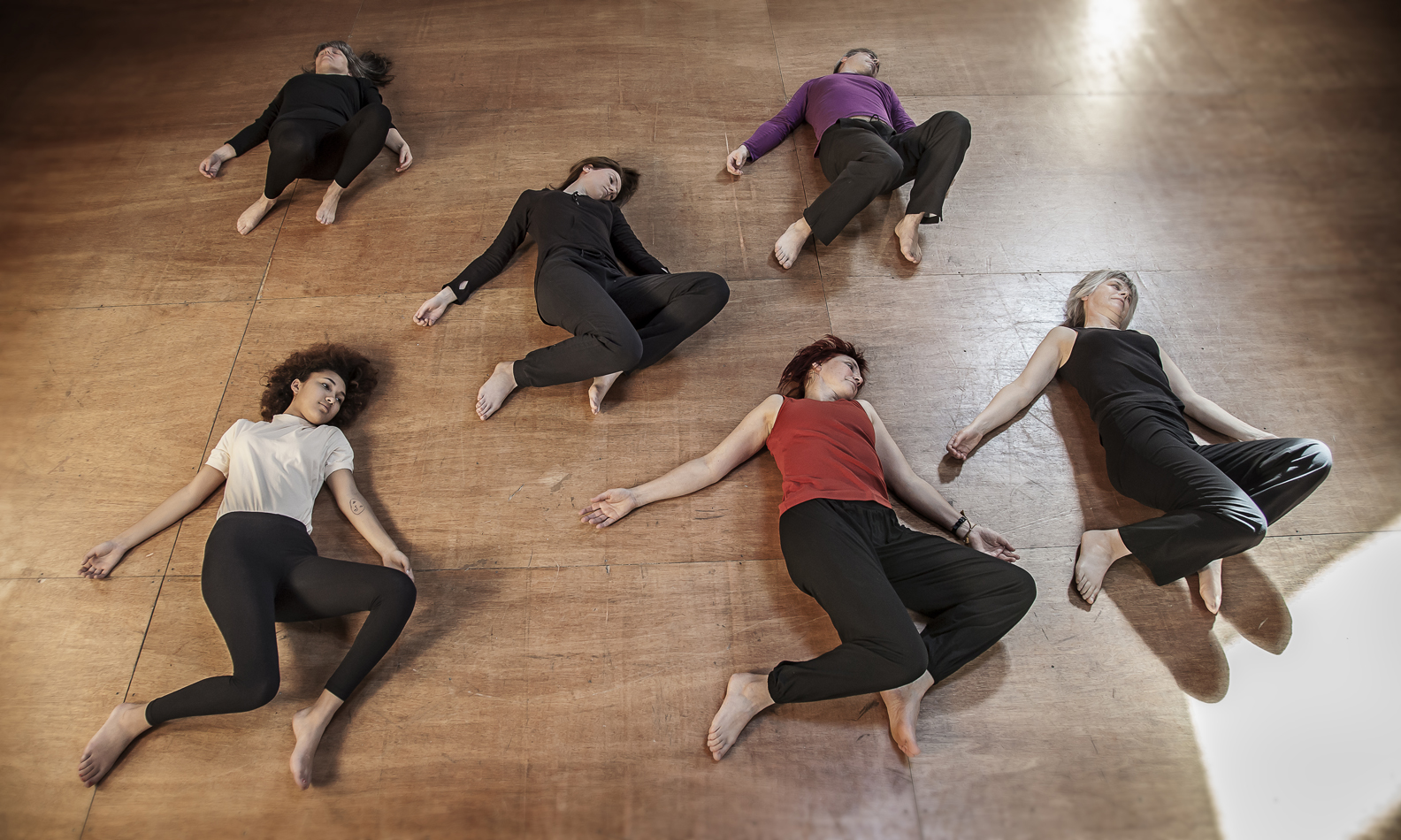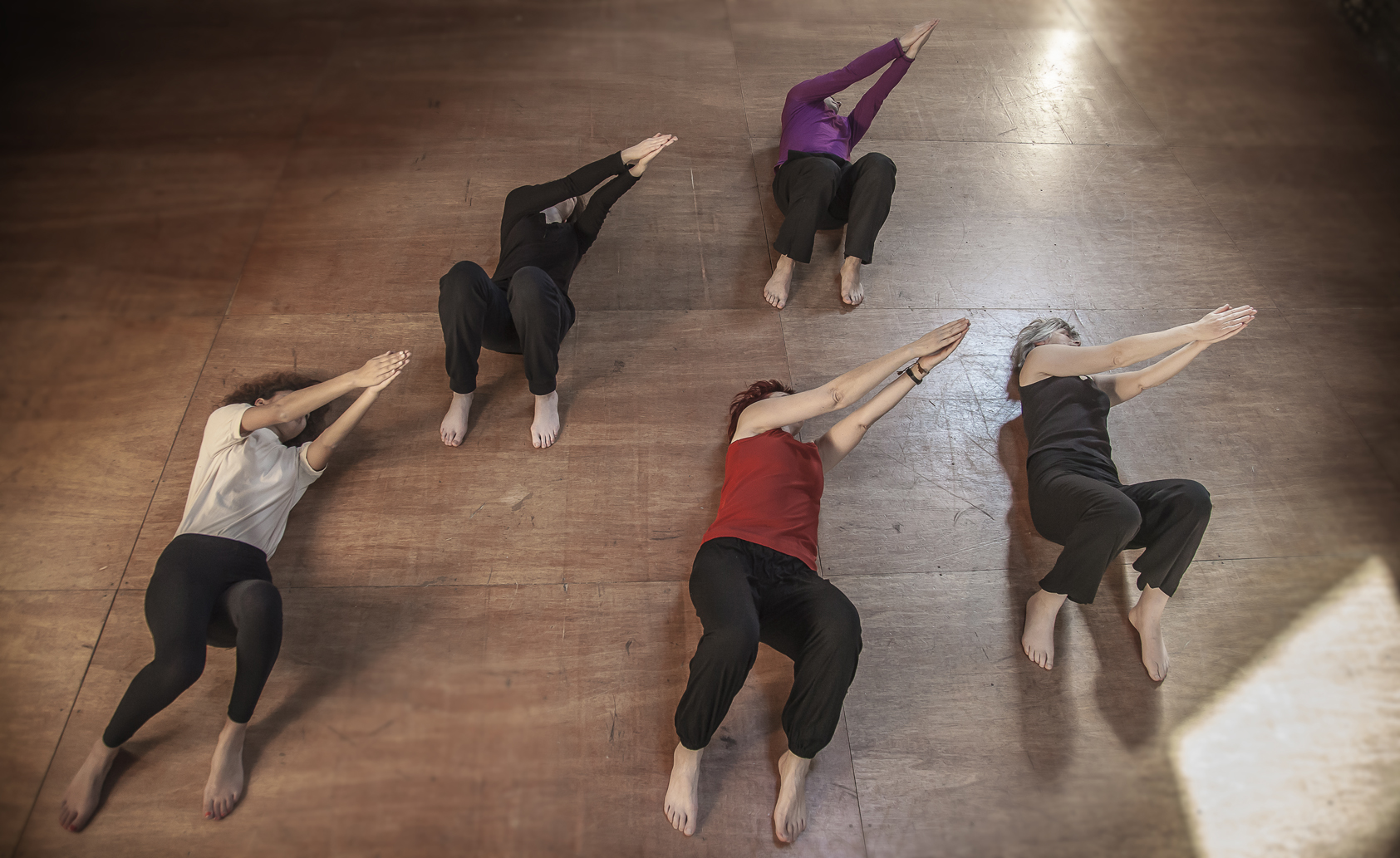You don't need much of anything to practice Feldenkrais which is one of its many appeals for me. Two props, however, come in handy for Feldenkrais classes - a mat and some kind of head support. If you are just starting with Feldenkrais, there is absolutely no need to buy anything.
Mat (free, basic)
A yoga mat can work in a pinch, but ultimately you'll need a surface that you can slide on. The combination of a yoga mat with a blanket on top provides cushioning while also allowing the possibility of sliding body parts. This is the basic mat setup I recommend. If you make it past this basic prop description I'll provide a fuller range of options.
If you are uncomfortable lying on the floor with these basic props you could add more layers (mats, blankets). If you are still uncomfortable, I am happy to help you find a setup that works.
Head Support (free, basic)
Folded towels work fine for head support. I suggest 1-2 folded towels for lying on your back, 2-3 for lying on your side. The amount varies by the dimensions and needs of your body. I can help you refine your arrangement in class.
Feel free to stop reading at this point if you are just getting started with Feldenkrais. If you have been doing Feldenkrais for a while and you're hooked, you may be interested in a more detailed description of prop options.
Detailed Description of Prop Options
Mat Options
Minimalist Approach
I rarely use a mat at home or at my studio preferring a more direct ground feel. I remember thinking one of my fellow students in Feldenkrais training was pretty crazy for always lying directly on the floor. Now I get it. However...as with many minimalist things, going mat-less is not for everyone.
Yoga Prop Approach
In my studio, students use a combination of yoga mat and Mexican blankets. A yoga mat is placed directly on the floor, the Mexican blanket unfolded to match the dimensions of the yoga mat. This combination achieves a decent amount of padding and offers a surface upon which body parts can slide (hands, feet, head, etc) - a common thing in Feldenkrais lessons.
I recommend a local (Ann Arbor) business if you are interested in buying a mat and/or Mexican blankets. Yogaware® LLC sells quality props designed to last.
https://www.yogaware.com/Props.html
Other options exist for buying yoga mats and blankets via the usual Internet sources. Quality can be an issue however.
Feldenkrais Mat
I used a Well Being Mat for a number of years (during my training and some years beyond) and enjoyed it in many respects. Its large size insures you have a good bit of territory for rolling and other more dynamic lessons. It has a surface that attempts to strike a balance between slide-ability and stick-ability. On more than one occasion, especially when wearing socks I wished it was a bit stickier. That said, it is a good and comfortable mat. The downsides: (1) $70 + shipping and (2) durability. My generation of Well Being Mat didn't last as long as I would have liked, the foam compressing and losing its life too early. However, given that I probably did 100's of lessons on the mat, its per lesson cost was pretty negligible.
https://wellmats.net/product/wellbeing-mat/
Tables and Chairs
If you cannot get all the way down to the floor you might want to consider some sort of table. Beds and massage tables are too squishy. You'll need an exercise table like those found in a PT clinic or a Feldenkrais table.
This is NOT a cheap option. Tables cost ~ $500 minimum. You may be able to find used tables. If you are interested in this option, feel free to contact me and I can point you in the right direction.
Another option is to skip lying down altogether and do Feldenkrais in a chair. This will limit the Feldenkrais repertoire available to you, but Feldenkrais in a chair can be quite helpful.
Head Support Options
In my opinion this is the only "essential" prop given that your really could skip the mat and lie directly on the floor.
Foam kneeling pads
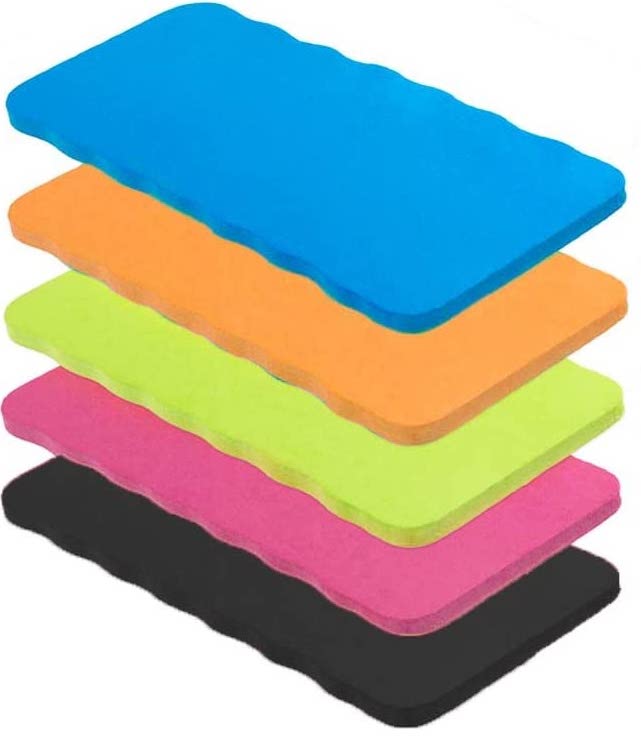 My preference is for some semi-firm foam kneeling pads under my head. The height is very easily adjusted by adding/removing pads. I purchased a variety of pads from Amazon and this is the set of 4 that I prefer:
My preference is for some semi-firm foam kneeling pads under my head. The height is very easily adjusted by adding/removing pads. I purchased a variety of pads from Amazon and this is the set of 4 that I prefer:
https://www.amazon.com/gp/product/B00CD6LVKC/ref=ppx_yo_dt_b_search_asin_title?ie=UTF8&psc=1
Blanket
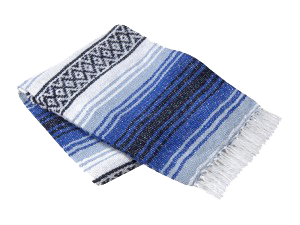 In my studio students often use a Mexican blanket under head. A fleece or wool blanket can also work. You want the blanket to have some bulk so it does not compress and make it hard for your head to roll. Blankets can adapted to the needs of the person and the class a bit of folding/unfolding. Blankets are a bit more awkward than pads to adjust in the middle of a Feldenkrais class, however.
In my studio students often use a Mexican blanket under head. A fleece or wool blanket can also work. You want the blanket to have some bulk so it does not compress and make it hard for your head to roll. Blankets can adapted to the needs of the person and the class a bit of folding/unfolding. Blankets are a bit more awkward than pads to adjust in the middle of a Feldenkrais class, however.
If you would like to purchase a Mexican blanket, I suggest Yogaware® LLC. They sell quality Mexican blankets:
https://www.yogaware.com/Props.html
Towels
Large folded beach or bath towels can be used for head support. Main benefit - you've already got them! Main downside - they have a bit more "give" than I'd like and they are hard to fold totally flat.
Foam Rollers
While not an essential prop, they are VERY useful for many things. I have a collection and I will give my thoughts on what I have personally tried.
Rollers come in a variety of sizes, densities and shapes. For the purposes of group Feldenkrais classes, the 36" X 6" (that's 3 feet long, 6 inches diameter) is the most useful and what I will reference in everything below. With the size selection out of the way, density and shape are the considerations.
Basic Roller
This is a basic, low cost, medium density foam roller that comes in 3 colors and is made in the US:
SmartRoller
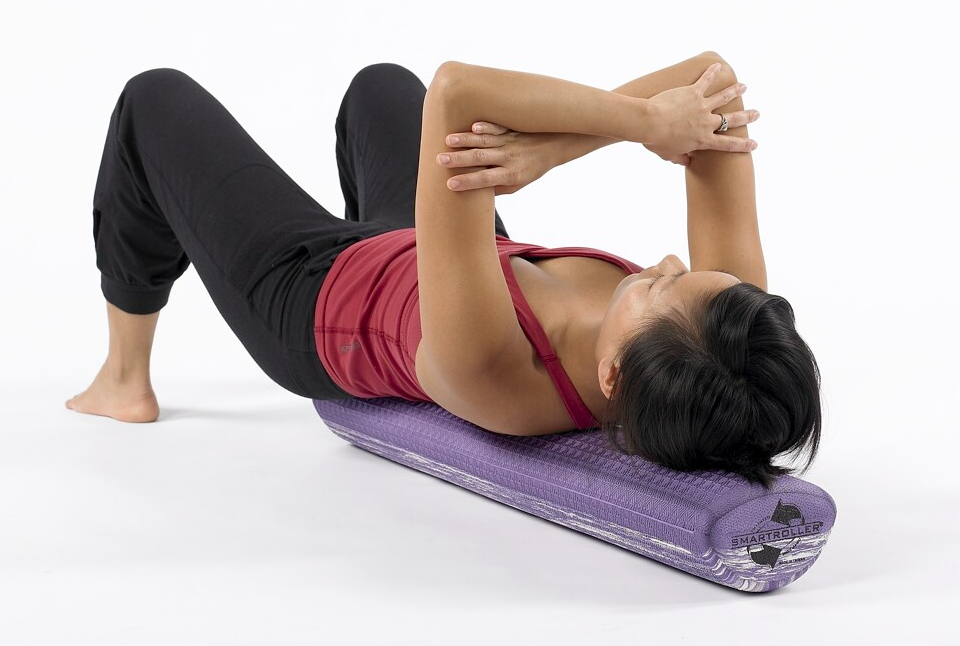 SmartRoller is my favorite. It has a density that works for me - it strikes a nice balance between firmness / softness. Further its asymmetric shape allows you to vary the level of instability you feel when lying on the roller. The asymmetric shape also gives different proprioceptive input depending on which side you choose to lie. OPTP sells are wide variety of durable foam rollers including the SmartRoller. You can certainly buy through other online retailers and local stores as well.
SmartRoller is my favorite. It has a density that works for me - it strikes a nice balance between firmness / softness. Further its asymmetric shape allows you to vary the level of instability you feel when lying on the roller. The asymmetric shape also gives different proprioceptive input depending on which side you choose to lie. OPTP sells are wide variety of durable foam rollers including the SmartRoller. You can certainly buy through other online retailers and local stores as well.
https://www.optp.com/SMARTROLLER?kw=smartroller
Round, Semi-firm Roller
Fully round, semi-firm rollers are readily available at sporting goods stores. OPTP makes a very nice version that will stand the test of time:
https://www.optp.com/PRO-ROLLER-Standard?kw=foam%20roller
Round, Soft Roller
Some of my clients prefer a soft roller. If your back tends to be sensitive, you might consider this option:
https://www.optp.com/PRO-ROLLER-Soft?kw=foam%20roller
Miscellaneous Props that I use in my classes
4" soft rubber balls (air-filled)
Various uses: under sit bone(s), under feet/foot.
https://www.amazon.com/gp/product/B0042ST386/ref=ppx_yo_dt_b_search_asin_title?ie=UTF8&psc=1
Sticky mat squares
We often have one or both knees bent while lying on our back. If you've ever tried maintaining that position for a while, you'll know that your feet may tend to slide and your knees may start to wobble. A sticky mat square of some sort stops your feet from sliding and simultaneously makes it easier to sustain this bent-leg, supine position. A piece of old yoga mat cut to accommodate your feet works well. Sticky kitchen drawer liner also works well.
